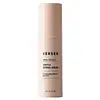What's inside
What's inside
 Key Ingredients
Key Ingredients

 Benefits
Benefits

 Concerns
Concerns

 Ingredients Side-by-side
Ingredients Side-by-side

Water
Skin ConditioningHelianthus Annuus Seed Oil
EmollientAloe Barbadensis Leaf Juice
Skin ConditioningSodium Acrylate/Sodium Acryloyldimethyl Taurate Copolymer
Emulsion StabilisingSilica
AbrasiveRetinol
Skin ConditioningTocopherol
AntioxidantTocopheryl Acetate
AntioxidantBakuchiol
AntimicrobialCrithmum Maritimum Extract
Skin ConditioningChamomilla Recutita Extract
Skin ConditioningMelia Azadirachta Flower Extract
Skin ConditioningMelia Azadirachta Leaf Extract
Skin ConditioningPaeonia Lactiflora Root Extract
Skin ConditioningOpuntia Streptacantha Stem Extract
HumectantLactobacillus/Papaya Fruit Ferment Extract
AbrasiveButyrospermum Parkii Butter
Skin ConditioningRosa Canina Seed Oil
EmollientHippophae Rhamnoides Seed Oil
Skin ProtectingHydrogenated Vegetable Oil
EmollientSodium Hyaluronate
HumectantGlycerin
HumectantLecithin
EmollientCaprylyl Glycol
EmollientCaprylic/Capric Triglyceride
MaskingXylitol
HumectantAnhydroxylitol
HumectantXylitylglucoside
HumectantTrehalose
HumectantSorbitan Oleate
EmulsifyingPolysorbate 20
EmulsifyingPolysorbate 80
EmulsifyingHexylene Glycol
EmulsifyingIsohexadecane
EmollientPhenoxyethanol
PreservativeEthylhexylglycerin
Skin ConditioningSorbic Acid
PreservativePotassium Sorbate
PreservativeSodium Benzoate
MaskingLeuconostoc/Radish Root Ferment Filtrate
AntimicrobialCitric Acid
BufferingWater, Helianthus Annuus Seed Oil, Aloe Barbadensis Leaf Juice, Sodium Acrylate/Sodium Acryloyldimethyl Taurate Copolymer, Silica, Retinol, Tocopherol, Tocopheryl Acetate, Bakuchiol, Crithmum Maritimum Extract, Chamomilla Recutita Extract, Melia Azadirachta Flower Extract, Melia Azadirachta Leaf Extract, Paeonia Lactiflora Root Extract, Opuntia Streptacantha Stem Extract, Lactobacillus/Papaya Fruit Ferment Extract, Butyrospermum Parkii Butter, Rosa Canina Seed Oil, Hippophae Rhamnoides Seed Oil, Hydrogenated Vegetable Oil, Sodium Hyaluronate, Glycerin, Lecithin, Caprylyl Glycol, Caprylic/Capric Triglyceride, Xylitol, Anhydroxylitol, Xylitylglucoside, Trehalose, Sorbitan Oleate, Polysorbate 20, Polysorbate 80, Hexylene Glycol, Isohexadecane, Phenoxyethanol, Ethylhexylglycerin, Sorbic Acid, Potassium Sorbate, Sodium Benzoate, Leuconostoc/Radish Root Ferment Filtrate, Citric Acid
 Reviews
Reviews

Ingredients Explained
These ingredients are found in both products.
Ingredients higher up in an ingredient list are typically present in a larger amount.
Lecithin is a term for a group of substances found in the cell membranes of plants, animals, and humans. They are made up of mixture of phospholipids.
This ingredient has emollient and emulsifying properties.
As an emollient, lecithen helps soften the skin and creates a barrier to keep moisture in.
As an emulsifier, it also helps prevent water and oil ingredients from separating. Lecithin can also help ingredients be better absorbed by the skin.
This is because the phospholipids in lecithin produce liposomes. Liposomes help other ingredients get through the skin barrier.
Depending on the source of this ingredient, lecithin may not be fungal acne safe. This is because some sources of lecithin come from soybean oil, which may feed the malassezia yeast that feeds fungal acne.
We recommend reaching out to the brand you are purchasing from to inquire about the source of their lecithin.
Some other names for this ingredient include soy lecithin and deoiled soy lecithin.
Learn more about LecithinPolysorbate 20 is made by combining ethoxylation of sorbitan, ethylene oxide, and lauric acid. It is a mild cleansing agent, surfactant, and emulsifier.
As a surfactant, it helps collect dirt and oils for washing. Emulsifiers prevent oils and water from separating.
Polysorbate 20 also adds scent to a product. Since it is made using sorbitol, it has a sweet scent. Sorbitol can also be found in fruits such as apples and peaches.
The lauric acid used to create Polysorbate 20 is often derived from coconuts.
Polysorbate 20 may not be fungal acne safe.
Learn more about Polysorbate 20Retinol is a gold-standard ingredient for anti-aging. It is a form of Vitamin A and belongs to the class of retinoids that also includes tretinoin.
Why is retinol famous?
It has the most scientific studies backing up its skin benefits out of all the non-prescription ingredients.
Retinol is proven to:
This is why retinol is effective at removing wrinkles, fading dark spots, treating acne, and reducing the appearance of pores.
Studies show retinol is less effective when exposed to UV. Be sure to look for appropriate packaging to keep your retinol potent (similar to Vitamin C).
Using retinol or any retinoids will increase sun-sensitivity in the first few months. Though studies show retinoids increase your skin's natural SPF with continuous use, it is best to always wear sunscreen and sun-protection.
We recommend speaking with a medical professional about using this ingredient during pregnancy.
Retinol may cause irritation in some people, so be sure to patch test. Experts recommend 'ramping up' retinol use: start using this ingredient once a week and work up to using it daily.
Read about Tretinoin
Learn more about RetinolTocopheryl Acetate is AKA Vitamin E. It is an antioxidant and protects your skin from free radicals. Free radicals damage the skin by breaking down collagen.
One study found using Tocopheryl Acetate with Vitamin C decreased the number of sunburned cells.
Tocopheryl Acetate is commonly found in both skincare and dietary supplements.
Learn more about Tocopheryl AcetateWater. It's the most common cosmetic ingredient of all. You'll usually see it at the top of ingredient lists, meaning that it makes up the largest part of the product.
So why is it so popular? Water most often acts as a solvent - this means that it helps dissolve other ingredients into the formulation.
You'll also recognize water as that liquid we all need to stay alive. If you see this, drink a glass of water. Stay hydrated!
Learn more about Water